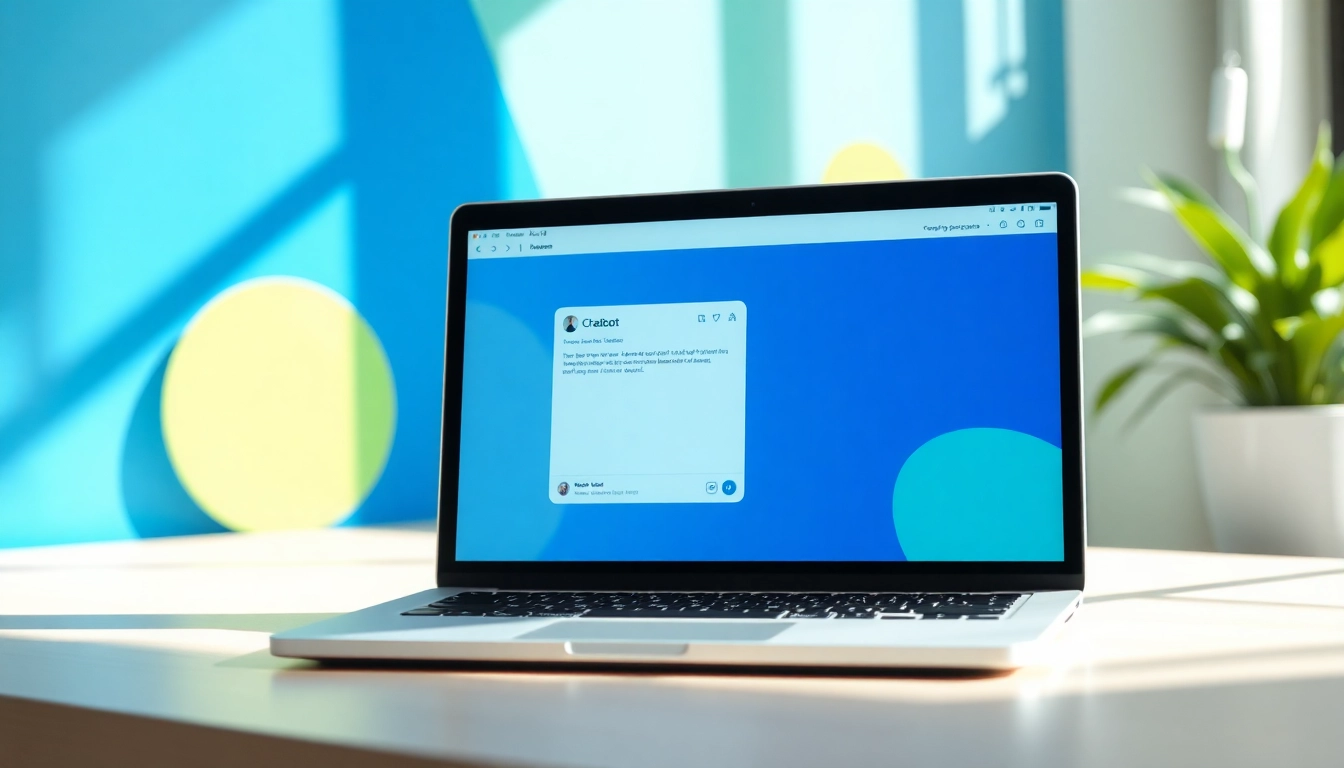Understanding Chatbots for Websites
What Is a Chatbot?
A chatbot is an artificial intelligence (AI) application designed to simulate conversation with users through messaging interfaces. With the rise of digital communication, chatbots have gained popularity as tools that can engage customers efficiently. They are capable of answering FAQs, assisting with reservations, guiding users through complex procedures, and offering support on various platforms. Essentially, a chatbot bridges the gap between human and machine interaction, allowing businesses to cater to their customers’ needs more effectively than traditional methods.
How Chatbots Operate
Chatbots operate through a combination of natural language processing (NLP), machine learning, and rule-based algorithms. Initially, chatbots were simple, following strict scripts to guide conversations. However, advancements in AI have equipped modern chatbots to understand and respond to user queries more intelligently. Some key components that power chatbots include:
- NLP: This technology allows chatbots to interpret the intent behind user queries, making interactions feel more natural.
- Data Analysis: Chatbots leverage analytics tools to gather data and improve their responses over time.
- Integration with APIs: Many chatbots can connect with other software applications (like CRM systems or databases) to provide up-to-date information and streamline processes.
Different Types of Chatbots
There are primarily three types of chatbots, each catering to specific user needs and operational scenarios:
- Rule-Based Chatbots: These chatbots follow a fixed set of pre-defined rules and can only respond to specific commands. They work well for straightforward inquiries and mature businesses looking to address frequently asked questions.
- AI-Powered Chatbots: With advanced NLP capabilities, AI-powered chatbots can learn from past interactions and improve user engagement over time. They can handle more complex queries and provide personalized responses to users.
- Hybrid Chatbots: Combining both rule-based and AI features, these bots offer more versatility and can switch between fixed responses and intelligent conversations based on user requests.
Benefits of Implementing a Chatbot for Your Website
24/7 Customer Support
One of the foremost advantages of having a chatbot for your website is its ability to provide round-the-clock support. Unlike traditional customer service channels that have limited hours, chatbots can offer assistance at any time of the day or night. This consistency not only improves customer satisfaction but also enhances engagement, as customers can reach out whenever it is convenient for them.
Improved User Experience
Chatbots can significantly enhance user experience on a website by providing immediate responses to inquiries. They reduce waiting times associated with human agents and improve satisfaction rates, contributing positively to brand loyalty. Furthermore, chatbots can guide users to find the information they need swiftly, reducing bounce rates and encouraging visitors to spend more time on your site.
Cost-Effective Solution
Implementing a chatbot can be a cost-effective alternative to maintaining a large customer support team. They can handle thousands of inquiries simultaneously, allowing businesses to scale support efforts without corresponding increases in operational costs. Furthermore, effective use of chatbots can lead to increased sales through proactive engagement, which can lead to better return on investment (ROI).
Key Features to Look for in Chatbots
Natural Language Processing (NLP)
When choosing a chatbot for your website, NLP is a critical feature to consider. Advanced NLP capabilities ensure that the chatbot can understand user intent, context, and sentiment, resulting in more human-like interactions. This not only improves user satisfaction but also reduces misunderstandings that can arise from poorly interpreted queries.
Integration Capabilities
The ability to integrate seamlessly with existing systems is essential for maximizing a chatbot’s effectiveness. Look for chatbots that support integration with customer relationship management (CRM) systems, e-commerce platforms, and various messaging applications. This ensures that all user interactions are streamlined and information is readily accessible across platforms.
Customizable User Interface
A chatbot should offer a customizable user interface that reflects your brand’s identity. Customization options can include personalized greetings, specific response styles, and the ability to use multimedia elements like images or videos. A well-designed interface can make interactions more engaging and enhance the overall user experience.
How to Integrate a Chatbot on Your Website
Choosing the Right Platform
The first step in integrating a chatbot on your website is selecting a suitable platform. This decision should account for factors such as your business size, budget, and specific needs. Popular chatbot platforms include chatbot for website solutions that provide easy integration, extensive customization, and robust features. Research and assess various options before committing to ensure the platform meets your requirements.
Step-by-Step Implementation Guide
Once you’ve chosen a platform, follow these steps for effective implementation:
- Define Purpose: Clarify what you want your chatbot to achieve – whether it’s answering customer inquiries, guiding purchases, or booking appointments.
- Customize Your Chatbot: Use the platform’s tools to design the chatbot’s conversation flow, responses, and branding. Make sure it aligns with your overall business voice.
- Integrate the Chatbot: Follow the platform’s instructions to embed the chatbot into your website. It usually involves adding a snippet of code to your site’s HTML.
- Train Your Chatbot: Input various user queries and responses to help the bot recognize intents accurately. The more data it processes, the better it becomes at handling inquiries.
- Conduct Testing: Before launching, test the chatbot in various scenarios to ensure it responds as expected. Gather feedback from a user group to identify any weaknesses.
- Go Live: Once you are satisfied with the chatbot’s performance, make it live on your website.
Testing and Optimization
Post-launch, continuous testing and optimization are critical to a chatbot’s success. Regularly review user interactions to identify common questions, issues, and potential improvements. Use this data to refine conversation flows and expand the knowledge base, ensuring that the chatbot evolves and remains relevant over time.
Measuring Chatbot Performance
Key Performance Indicators (KPIs)
To assess the effectiveness of your chatbot, track relevant KPIs such as:
- User Engagement Rate: Measure how many visitors interact with the chatbot versus total site visitors.
- Response Time: Assess how quickly the chatbot responds to user queries.
- Resolution Rate: Determine the percentage of interactions that result in successful resolutions without the need for human intervention.
- User Satisfaction Score: Gather user feedback on their experiences with the chatbot to gauge satisfaction levels.
Gathering User Feedback
Actively seek user feedback to gain insights into the strengths and weaknesses of your chatbot. Surveys, ratings, and direct customer interviews can provide valuable information on the chatbot’s performance and areas where it can improve. Understanding user sentiment is fundamental to enhancing the bot’s functionality and ensuring user expectations are met.
Continuous Improvement Strategies
Establish a cycle of continuous improvement for your chatbot by regularly analyzing performance data and user feedback. Implement strategies such as updating the knowledge base, expanding the range of queries it can address, and adjusting conversation flows based on user interactions. This proactive approach will enhance the user experience and ensure that the chatbot remains an efficient tool for customer engagement.








